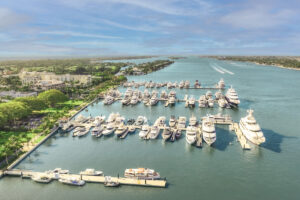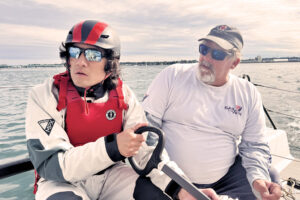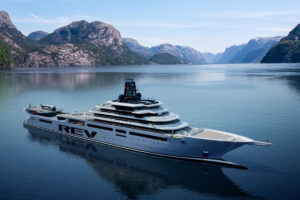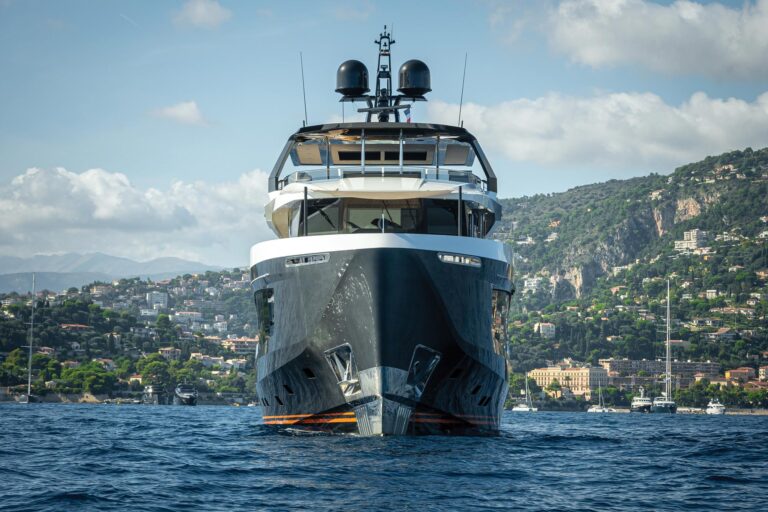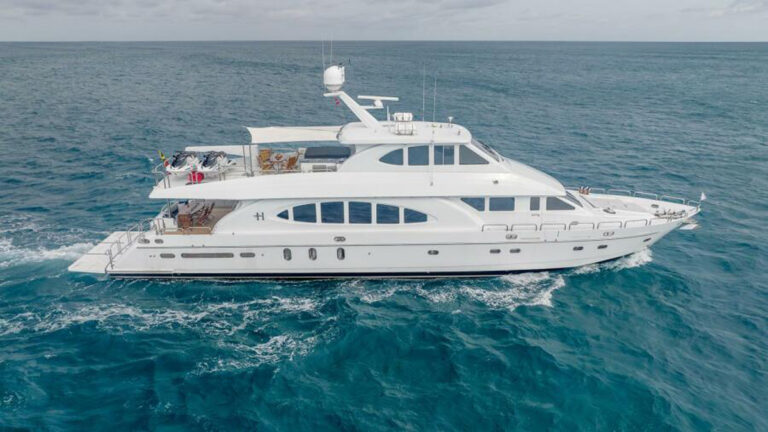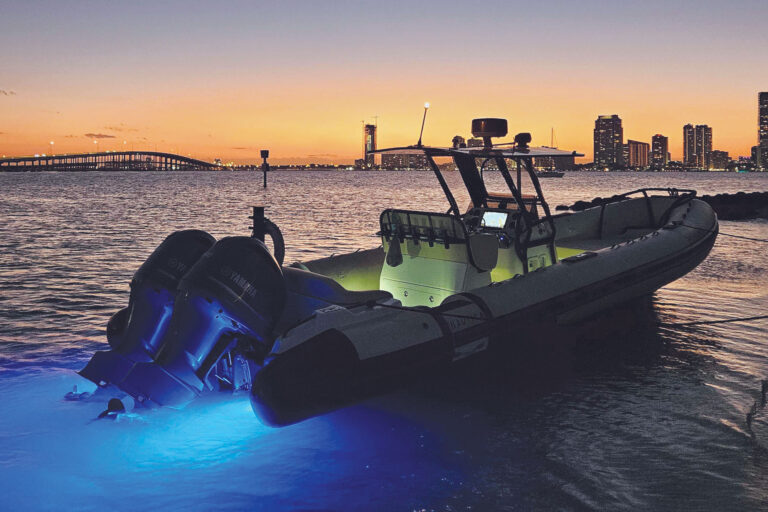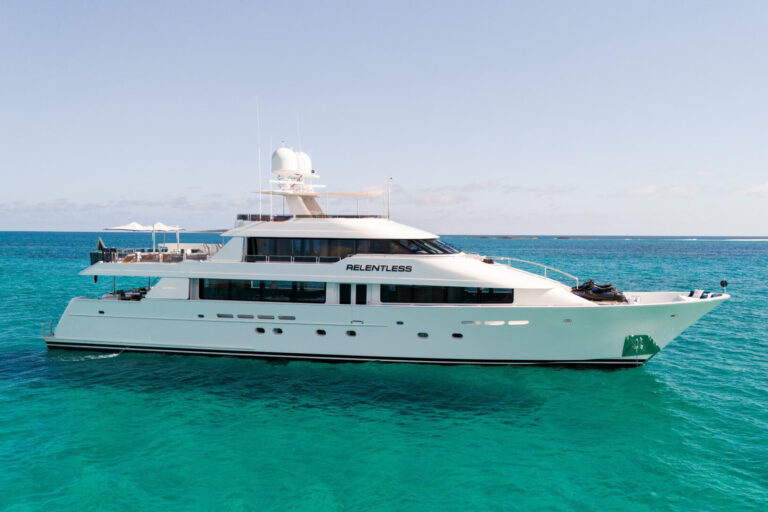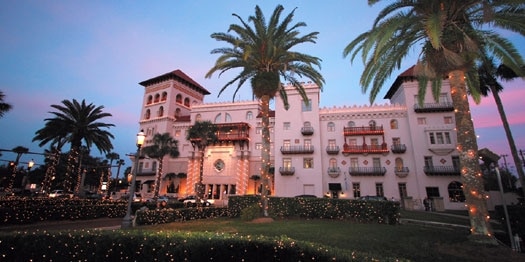
St. Augustine
Cruising south, whether in search of summer fun or warmer winter climes, it is difficult to miss St. Augustine. Whether you spot its black-and-white striped lighthouse from offshore or pass beneath the Bridge of Lions on the Intracoastal Waterway, St. Augustine is unlike any other destination in the U.S. If you choose to stop, you may be pleasantly surprised-the city has much more to offer than just its past.
Far from being a historic theme park or a re-creation of an early American settlement, St. Augustine is a small but very active city that claims title as the “oldest continuously occupied settlement of European origin in the United States.” Forty-two years before the English colonized Jamestown and 55 years before the Pilgrims landed at Plymouth Rock, the Spanish established this outpost on the east coast of what is now northern Florida.
Spaniard Juan Ponce de Leon was the first European to visit Florida. Arriving on Easter Sunday in 1513, he promptly claimed it for the Crown. Whether he was looking for the Fountain of Youth or exactly where he landed is open for debate-except in St. Augustine where the spot is marked by a stone cross. I have sipped the spring water and have yet to see results; still, the park, which is an active archaeological site, is worth a visit.
Ponce de Leon moved on and Pedro Menendez de Aviles, one of Spain’s most capable admirals, established the settlement on September 8, 1565. But the English took a fancy to the area as well, and made something of a sport of pillaging and burning the Spanish town. In response, the Spanish built Castillo de San Marcos of local limestone coquina (fossilized shells). Stonemasons from Havana labored for 23 years and completed the massive structure in 1695. The fort couldn’t stop the British from taking possession of St. Augustine by treaty in 1763, though after the American Revolution the Spanish acquired Florida once again. Their colonial architecture still exists and the city’s 16th century Spanish layout survives in the narrow cobblestone streets and balconied houses.
With Napoleon to deal with, Spain lost interest in the property and the U.S. took over in 1821. Florida joined the Union in 1845 and the Union controlled the city through most of the Civil War. Today the Castillo de San Marcos is in the hands of the National Park Service and its formidable walls dominate the northern border of the city. It is well worth a visit and is a short walk from the city’s center. Its soft coquina walls still show the wear and tear of cannon balls and assorted firing squads.
Dreamer, developer and former Standard Oil partner, Henry Flagler began creating the city’s most prominent structures just 22 years after the Civil War. Flagler’s vision of St. Augustine as a tourist Mecca, “the Newport of the South,” took shape in the form of two spectacular hotels. The first, the Ponce de Leon, was Flagler’s most extravagant and is now Flagler College. The second, the Alcazar, is now the Lightner Museum, home to an impressive collection of furniture and artifacts from St. Augustine’s glorious Gilded Age.
Thanks to the Kessler Collection, a third grand hotel, the Casa Monica, is still in operation. Designed and built by Bostonian Franklin W. Smith, founder of the YMCA, the hotel opened for business in 1888 and its luxurious rooms were offered at the exorbitant rate of $3.00 per night. Sold to his competitor, Flagler, just months after opening, it closed in 1932 and remained dormant until the mid-1960s when it served as the county courthouse. Kessler purchased and reopened the 138-room hotel in 1999.
There is much to do and see in St. Augustine and if you’ve never visited the city one of the best ways to get your bearings is to take a carriage ride. Trolley tours and guided walking tours are also available. The shops, boutiques and cafés offer an eclectic blend of goods, fashion and fare-don’t pass up a cool beverage and a bit of music at Scarlett O’Hara’s. The Colonial Spanish Quarter, a portion of St. George Street dressed in period fashion, offers an interesting window into the city’s past. Kids will enjoy Potter’s Wax Museum and Ripley’s Believe It or Not, while adults shouldn’t miss the Lightner Museum or a visit to the San Sebastian Winery. The latter offers guided tours, wine tastings and theme events that blend art, music and wine. If you’re not up for a short drive, don’t tell the kids about the St. Augustine Alligator Farm. Established in 1893, it is listed on the National Register of Historic Places, where it’s in good company.
Good food is hard to miss. My favorites include the Columbia Restaurant for Spanish and Cuban specialties, and La Parisienne for more intimate dining (reservations a must).
There is really no bad time of year to visit, although I prefer the cooler months. Holidays should be avoided if you don’t like crowds, as the city is a popular destination. There are also quite a few scheduled events that are worth noting. Art walks on the first Friday of each month are a great time to tour the city’s galleries and the “Nights of Lights” celebration during the holidays sets the city aglow. But you’ll find lots to do no matter when you come.
While I have visited the St. Augustine dozens of times in the last 20 years, I always regret having to leave and look forward to returning to this city that is filled with just as much fun as it is history-enjoy!
For Staying Aboard
There are a number of good options for dockage when visiting St. Augustine. The 85-slip St. Augustine Municipal Marina (904-825-1026) is the most convenient. Located in town, it is steps away from the historic district. Dockage for yachts over 100 feet in length is available and there is fuel and a small ships store. The dockmaster reports a controlling depth over 10 feet. The 194-slip Conch House Marina Resort (800-940-6256) is about a five-minute car/skiff ride from town. The marinacan accommodate yachts over 100 feetin length and the docmaster reports a controlling depth of 7 feet.There is a lounge, a restaurant, a pool and a small motel on the property. Camachee Cove Yacht Harbor (904-829-5676) is about three miles from town (two courtesy cars are available) just north of St. Augustine’s inlet. There are 250 slips and space enough for yachts over 100 feet in length; 100 amp shore service is available and thedockmaster resports a controlling depth of 7 feet. Cmachee Cove has a full-service yard, a business park and a small hotel with waterfrom accommodations.
I have stayed aboard in each of these facilities and can’t say that I have a favorite because all are excellent. Tides are about 6 feet and floating concrete docks are the norm. Do plan for hte current when making an approach, particularly at the Municipal Marina.
For Staying Ashore
Five towers distinguish the Casa Monica Hotel, and it’s location in the heart of St. Augustine’s historic section makes it an ideal base for exploration. While rates have gone up a bit since 1888, the atmosphere and service are memorable-I am certain Henry Flagler would be pleased. The hotel’s Spanish-Moorish interior design is accented with classic art, elegant tapestries and handmade chandeliers. Four of the towers feature two-story suites and a three-story, two-bedroom penthouse. Those who want a fast bite will find Café Cordova’s deli fare pleasing. The Cobalt Lounge in the hotel lobby is a popular spot for visitors and locals. For fine dining there is not better place in town that 95 Cordova. This world-class restaurant located in the hotel is decorated with antique Moroccan furnishings and rare are. The 20-seat Wine Room is the perfect place to enjoy 95 Cordova’s extensive wine list and the creative American-international cuisine prepared by award-winning Executive Chef Rene Nyfeler. Incidentally, the hotel and Chef Nyfeler hosted the kind and queen of Spain during their recent visit to the city.

